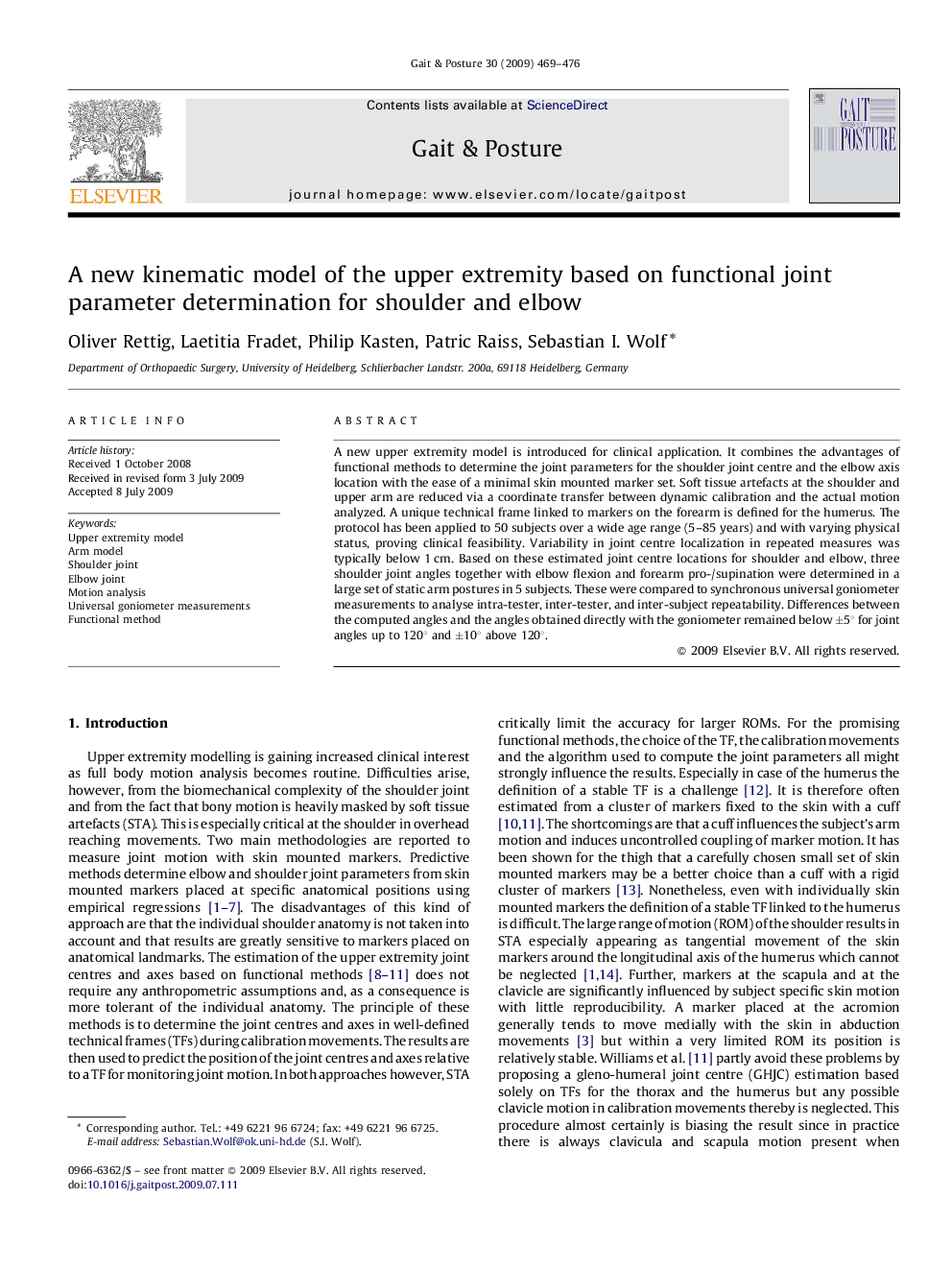| Article ID | Journal | Published Year | Pages | File Type |
|---|---|---|---|---|
| 4056966 | Gait & Posture | 2009 | 8 Pages |
A new upper extremity model is introduced for clinical application. It combines the advantages of functional methods to determine the joint parameters for the shoulder joint centre and the elbow axis location with the ease of a minimal skin mounted marker set. Soft tissue artefacts at the shoulder and upper arm are reduced via a coordinate transfer between dynamic calibration and the actual motion analyzed. A unique technical frame linked to markers on the forearm is defined for the humerus. The protocol has been applied to 50 subjects over a wide age range (5–85 years) and with varying physical status, proving clinical feasibility. Variability in joint centre localization in repeated measures was typically below 1 cm. Based on these estimated joint centre locations for shoulder and elbow, three shoulder joint angles together with elbow flexion and forearm pro-/supination were determined in a large set of static arm postures in 5 subjects. These were compared to synchronous universal goniometer measurements to analyse intra-tester, inter-tester, and inter-subject repeatability. Differences between the computed angles and the angles obtained directly with the goniometer remained below ±5° for joint angles up to 120° and ±10° above 120°.
